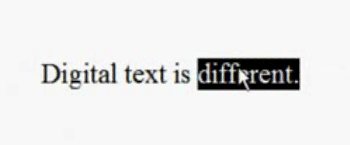Thursday Topsight, February 22, 2007
 Clearing out some of the backlog...
Clearing out some of the backlog...
• Word of the Week: Retroprobium A neologism by Paul Saffo, retroprobium is defined as "retroactive opprobrium... judging past actions by present standards." A clear example would be the horror we feel today at the overwhelming racism in the U.S. just 50 years ago (not meant to say that there's no racism today, but it manifests in a very different and more subtle way). I've believed for awhile that, by the mid-century if not sooner, the present-day practice of eating meat from dead animals will be seen with a similar kind of horror, for reasons combining environmental awareness, ethical awareness, and health. Now I have a word for that kind of reaction.
Oddly, the examples that Saffo cites -- reactions to past drug use, and potential problems for the digital exhibitionism of the MySpace generation -- ring false to me. I don't see the criticism of decades-old drug use that he does (outside of a few narrow groups), and I'm not convinced that the MySpacers of today will be embarrassed in the years to come by their digital archives. I think it's more likely to be such a commonplace experience that any sting will have long since evaporated. If anything, the retroprobium I more commonly see involves changing values around inflicting harm or arbitrary restrictions upon others, not inflicting "harm" (as perceived by some) on oneself.
Maybe it's a generational difference.
• Low-Energy Websites: I have the gut sense that "life hacking" common activities to reduce one's energy footprint (hence greenhouse gas footprint) is going to be huge. My cheeseburger footprint series was an example, but Treehugger today comes up with something even better -- because there's already a clever solution.
Displays that produce light-per-pixel, such as on-their-way-out CRTs and on-their-way-in Organic LEDs (but not the traditional LEDs in your current laptop display, which has an always-on backlight that's selectively blocked), draw differing amounts of power depending upon which colors they display: on a typical CRT, an all-white screen draws 74 watts, while an all-black screen only draws 59 watts. A minor difference, seemingly, but if you calculate out the difference that would result by Google changing its home page from white to black, the results are enormous:
Take at look at Google, for instance, who gets about 200 million queries a day. Let's assume each query is displayed for about 10 seconds; that means Google is running for about 550,000 hours every day on some desktop. Assuming that users run Google in full screen mode, the shift to a black background will save a total of 15 (74-59) watts. Now take into account that about 25 percent of the monitors in the world are CRTs [so the savings is 750 megatwatt-hours total], and at 10 cents a kilowatt-hour, that's about $75,000/year, a goodly amount of energy and dollars for changing a few color codes.
But all-black web-pages can be very hard to read (especially if the text is black, too). But wait! Designer Jon Doucette looked at the Energy Star ratings for different colors, and came up with a low-energy web palette, shown here at the top of this entry. This palette will, on average, draw only about 3-4 more watts than an all-black page.
Looks like a site redesign may be in order...
 • The Web is People!: Michael Wesch, Assistant Professor of Anthropology at Kansas State University, has assembled a terrific four-and-a-half-minute video called "The Machine is Us/ing Us" that explains what "Web 2.0" means -- not with a cold lecture or a pseudo-powerpoint, but by showing us the new world.
• The Web is People!: Michael Wesch, Assistant Professor of Anthropology at Kansas State University, has assembled a terrific four-and-a-half-minute video called "The Machine is Us/ing Us" that explains what "Web 2.0" means -- not with a cold lecture or a pseudo-powerpoint, but by showing us the new world.
It's hard to describe, really -- there are no voices, just a musical score, and a remarkably clever presentation of words on the screen. If you don't know what people mean by Web 2.0, watch it; if you think that Web 2.0 is just marketing hype, watch it; if you think you know exactly what Web 2.0 is, watch it.
In other words... oh, just go watch it.
• Six Views of Jupiter: Eight different spacecraft have visited Jupiter over the past 34 years, and in nearly every case, each successive probe had better imaging capabilities. The Planetary Society's blog put together a nice composite shot of pictures of Jupiter, showing the Great Red Spot, from six different missions, from Pioneer 10 in 1973 through New Horizons in 2007. New Horizons isn't actually a Jupiter probe, it's heading of to Pluto and the Kuiper Belt, but using a gravity assist slingshot from Jupiter.
The good: it shows just how much the Great Red Spot has changed in what is really quite a short period of time -- it may not last the century.
The sad: the pictures are only in black and white, not color -- even from the ones able to take more-or-less true color pictures.
• Change Your Default Passwords, Damnit! Bruce Schneier describes a clever hack that can easily take over a home wireless router. Easily, that is, if you haven't changed your damn default password. Sheesh. It takes all of 3 seconds to do, and even a simple password is better than sticking with the default.





